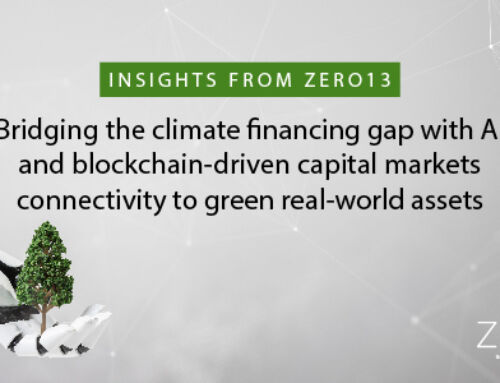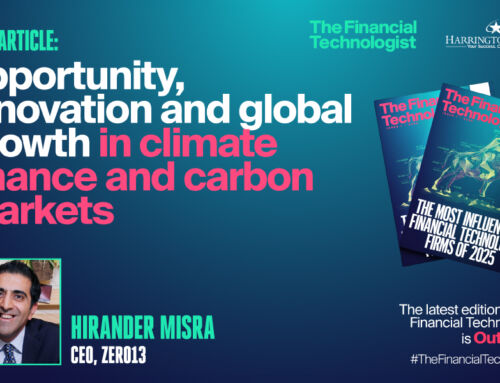Can blockchain facilitate sustainability and ESG friendly investing?
- Helen Disney, Director, The Realization Group
- Charles Kerrigan, Partner, CMS
- Nicolas Steiner, Partner Strategic Development, Scrypt Digital
- Brendan Bradley, author, ESG Investing for Dummies
Can blockchains be used as incentive networks for encouraging green activity and renewables?
ESG is an important use case for blockchain. Regulators are understandably concerned about green investing and specifically, greenwashing, and the chain doesn’t lie, so blockchain technology is entirely aligned with achieving ESG objectives and guidelines.
Blockchains, particularly proof of work blockchains, are – or can be – environmentally friendly. The facts speak for themselves: the recent ETH merger will achieve a staggering 99.5% reduction in infrastructure footprint and environmental impact. The fact that Ethereum is moving from proof of work to proof of stake is also encouraging greater blockchain ‘greening’ (alongside moves towards greener Bitcoin mining, and incentives for using renewables).
There is demand for more dedicated focus on digital ESG, looking at where blockchain can add improvements with respect to asset creation and servicing, and tracking of ESG investing data to prevent greenwashing.
What’s the 5-10-year digital ESG horizon? Is regulation needed to drive change?
It’s somewhat clichéd, but there really is a lot of regulatory uncertainty relating to digital assets, and indeed around ESG (although to a lesser extent). Some frameworks have been established, and while the EU is currently ahead of the UK in terms of evolving ESG regulation, it will be interesting to see if the [most!] recent change in UK government leadership changes that situation.
The Corporate Sustainability Reporting Directive is the (big) piece of regulation that everyone’s looking at; it does a number of things that are compatible, by and large, with blockchain technology (and might also leverage blockchain technology to deliver its objectives).
In the US, regulation is much more focused on the E in ESG, whereas in the UK and EU, it covers the broader E, S and G. From a compliance perspective it is interesting that regulators are taking a prescriptive rule, rather than a principle-based approach. When looking to create ‘regtech’ solutions for compliance and reporting, [software] code struggles with principles. Code has to be told what to do to meet specific objectives, so to the extent that blockchain is part of a family of automation technologies, ESG rules are good news. They require a level of granularity that is hard to achieve without technical and software support (that blockchain can offer). Further, rules have teeth; with duties and responsibilities for companies and their directors and sanctions for non-compliance.
The law is catching up slowly with respect to ESG and different jurisdictions have different approaches, albeit with much common ground. The UK Law Commission has published a 549-page consultation document on digital assets that is essentially a textbook on English property law. Beyond defining digital assets, the consultation looks at challenges around ESG on blockchain with respect to information that has historically been legally protected solely through intellectual property (IP) rights. With respect to digital assets, there is an increasing acknowledgement that associated information (e.g. smart contracts) should be recognised in law as asset (property) in their own right.
The volume of ‘ESG-friendly’ assets under management (and available to be tracked by indices) is huge. The big question is whether ESG investment in ‘green stocks’, in and of itself, does anything to move the sustainability dial and achieve impact investing objectives. As one panellist noted, the question to ask (apologies to Eminem) is “Will the real ESG please stand up”. For most people it’s an investment choice – a sort of ESG FTSE100 or ESG S&P500 green investment decision. However, determining the ESG score that should be attributed to particular companies or stocks is left to the index providers; there is no industry standard.
Some asset management firms like Invesco have developed proprietary methodology for calculating ESG scores for the companies they invest in, based on multiple data points (accessed with varying degrees of difficulty). The fundamental issue with this type of scoring, however, is that while it may tick a ‘green investment’ box, there is no subsequent encouragement for low-scoring companies to improve their score; it’s all subjective – companies are either on or off the investment list.
Right now, most firms are doing their own thing when it comes to implementing ESG data gathering and management solutions, whereas a DLT/blockchain solution could manage all of the data that’s ingested to create a rigorous utility that benefits all. In terms of data sources and data points, regardless of the technology employed, the ‘rubbish in, rubbish out’ analogy applies.
Any system must enable the validation of data provenance, ensure it can’t be tampered with, and be able to share the data with all parties on the chain appropriately and securely. Like everything in blockchain, it’s important to look under the bonnet and make sure it’s being done.
The E (environmental) in ESG is arguably simpler to regulate since it can be linked to tangible, measurable objectives and goals per: reducing emissions, net zero targets et al. Conversely, by prescribing the levels of permissible net emissions, entities that are big ‘emitters’ (for example, fuel producers) can potentially buy up others’ ‘unused’ emissions (within acceptable levels) to offset their own activity, with no net reduction in emissions.
S (social) is probably the most well-known and understood of the ESG triumvirate, although the global pandemic may have edged it further into the spotlight. Pre-pandemic, few companies really focused on their employees’ wellbeing or paid much attention to external social impacts of their business activity? At the same time, it is difficult to prescribe (or enforce) the right ‘levels’ required to satisfy mandated ESG targets for subjective matters like gender, sexuality and disability. While certain aspects of the governance piece might be codified, it is generally accepted that it is harder to codify these social elements. NGOs are driving a lot of social-leaning initiatives – including cryptocurrencies and CBDC projects – particularly in terms of mobile and non-bank financial access, and are investing heavily to establish data frameworks and data verification platforms that represent true ESG action.
With regard to G (governance), fund managers and investors have, for many years, been very focused on governance, particularly with respect to newer and emerging markets given that they are perceived to have de facto greater governance challenges. While the concept of good governance is not new, particularly in light of other recent regulation like SMC&R, there is a need to define new and specific ESG data points and associated reporting obligations.
This may be where ‘new’ technology comes to the fore, such as natural language processing and machine learning, which could be valuable here. Hypothetically, ESG management could be moved on to a blockchain. (The EU, for example, could dictate use of a central ESG blockchain established in conjunction with its Corporate Sustainability Directive). Other new business models are evolving continuously – some truly experimental, some that don’t fit a tokenomics model and some, like certain DAO (decentralized autonomous organization) projects related to climate sustainability, that evolve to be quite different from their starting point.
Blockchain is a network built on the need for value transfer. As such, blockchain and ESG could fit potentially within a tokenization model and could be a way for financial institutions to get more comfortable with these new products and technologies. From an ESG data perspective, sectors could come together to amalgamate ESG data (fashion industry, for example) and package it (even tokenize it) to sell to financial institutions.
While institutions are becoming more digitally-sophisticated, the pace of adoption of new technologies and assets may be hampered by continuing negative narrative around crypto, particularly with regard to its environmental impact (for example, the oft-repeated tropes like ‘Bitcoin has the same energy footprint as Argentina’). The cultural aspect also can’t be ignored. Market participants need to be able to trust this new breed of products and infrastructure. There is no doubt that trust in, and resulting utilization of, the technology is increasing, which will likely lead to some stunning industry ‘wins’ to reach the level needed for traditional players to embrace it wholeheartedly – sooner rather than later.





